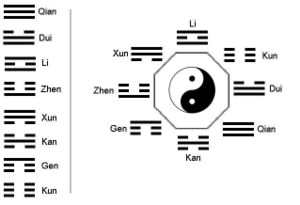| Positive Psychology Lecture No 3 |
Eastern Perspectives of Positive Psychology Ph.D. C.Psych What comes to you mind when you read “East meets West”? What are the implications for positive psychology with increasing importance of China on the international stage? What distinguishes the Eastern brand of positive psychology from the American counterpart? What are the influential schools of thoughts that have shaped Asian culture and the Eastern ways of living well? In this lecture and the next one, we will explore these questions. Introduction
An illustration of Chinese wisdom “A good fortune may forebode a bad luck, which may in turn disguise a good fortune.” What does it tell us about the Eastern world view? The parable of an old man who lost and found his horse (his most valuable possession) teaches us that loss may mean gain, and gain may mean loss; thus negative and positive are intertwined. This parable also teaches us that we need to take things in stride and accept life with equanimity. Contrasts between East and West: An overview
I Ching and Eastern culture I Ching or the Book of Changes is the oldest of the Chinese classic texts. In this section, I borrow extensively from Wikipedia. I Ching is an ancient symbol system designed to identify order and regularity in the midst of constant change. This is similar to the scientific effort to discover laws and principles in the midst of chaos and flus. History of I Ching Traditionally it was believed that the principles of the I Ching originated with the mythical Fu Xi, one of the earliest legendary rulers of China (traditional dates 2800 BCE-2737 BCE). The wisdom of the 8 trigrams (ba gùa) was revealed to him supernaturally. Later, during the time of Spring and Autumn (722 BCE - 481 BCE), Confucius is traditionally said to have written the Shi Yi (shí yì, "Ten Wings"), a group of commentaries on the I Ching. The context of I Ching The actual text of the I Ching is a set of predictions based on a set of 64 abstract line arrangements called hexagrams (guà). Similar to horoscope, I Ching can be used for divination. However, the essence of I Ching is a system of philosopy that is the heart of Chinese cultural beliefs. We need to understand I Ching in order to appreciate the disctinctiveness of Chiese culture. yì, when used as an adjective, means "easy" or "simple", while as a verb it implies "change” or “variability" jìng here means "classic (text)", derived from its original meaning of "regularity" or "persistency" Persistency refers to the essence of the substance, the unchanging principle in the universe. Thus, the title means that text describes the persistent Ultimate Way which will not change throughout the flow of time and the constant flux of events. Commented on by Zheng Xuan in his writings Critique of I Ching (yì zàn) and Commentary on I Ching ( yì lùn) of Eastern Han Dynasty. The meaning of Baqua It means the eight trigrams of abstract lines, each with it unique meaning and prediction, as shown in Figure 1. http://en.wikipedia.org/wiki/Bagua_%28concept%29
Figure 1 A schematic representation of Baqua There are two possible sources of bagua: The first is from traditional Yin and Yang philosophy. The interrelationships of this philosophy were described by Fuxi in the following way:
The hexagrams are mere mnemonics for the philosophical concepts embodied in each one. The philosphy represented by Baqua centres around the ideas of balance between opposites and acceptance of change: These two themes are fundamental to our understanding of Asian positive psycholoyg. The impact of I Ching on Chinese culture The concepts of Yin and yang permeate Chinese culture. They are especially associated with the Taoism. I Ching is also considered as a Confucianist classic, because The Wings or Appendices of I Ching (not the I Ching proper) are attributed to Confucius, and this book is one of the Five Confucian classics required as part of the Civil Service Exams in Imperial China. The biggest influence of I Ching on Asian positive psychology is the deeply ingrained concept of luck or fortune as essential part of happiness and the good life. The concept of luck is more profound than random chance or happenstance. Luck is related to such transcental beliefs as karma and fatalism. The concept of luck or fortune is closely linked to the belief system that human beings are not the masters of their own fate or captains of their own destiny, because one needs to take into account transcendental and macro forces that are beyond one’s control. There is nothing much one can do in times of bad luck except to accept the reality and wait for the tide to change. To the Chinese mind, acceptance is hopeful. |
©1998-2007,
International Network on Personal Meaning, Unless otherwise noted
Visit http://www.meaning.ca
for more information.

